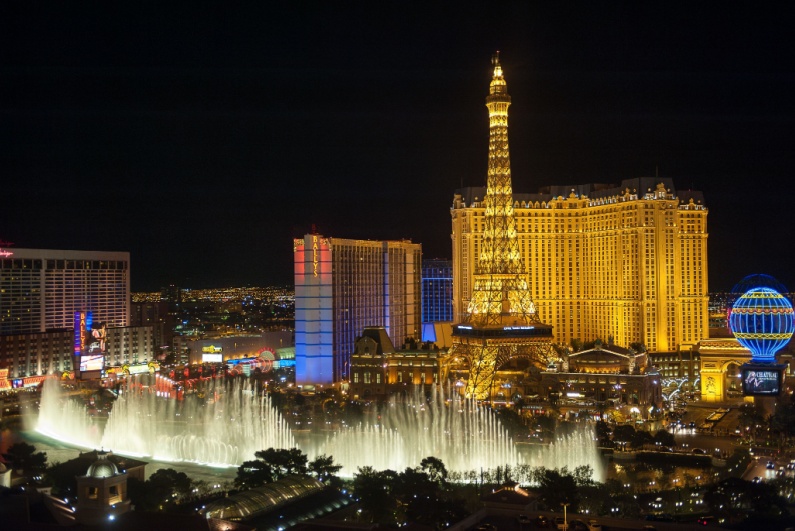A shift in approach
Las Vegas Strip casinos had a reputation for many years of doing whatever they could to try to attract gamblers and keep them at resorts for as long as possible. Whether this was as simple as giving free drinks to people on the gaming floor or comping penthouse suites worth thousands of dollars per night to high rollers, these operators often pulled out every stop.
cutting costs wherever possible
This is no longer the case, as many properties are significantly tailing back the perks that they provide to patrons. They’re cutting costs wherever possible, making it tougher for gamblers to win, and preferring to focus on higher-spending customers.
It’s an approach that seems to be paying off, with the Strip’s commercial gaming revenue reaching a record high of $8.8bn in 2023. This article looks at a few ways that gamblers are getting squeezed at every turn.
Not-so-free drinks
One of the joys for many people who gamble in Las Vegas is the complimentary drinks they get on the gaming floor. With a beer costing as much as $10 in some bars these days, the little things go a long way. Casinos realized that some people were only hanging around for the free drinks and this impacted their bottom line.
Casinos are now smarter about who they cater to, wanting to ensure that people have gambled enough to deserve the complimentary drinks. Park MGM has a system that monitors comp drinks on certain games. Video poker players, for example, are only entitled to a comped drink if they are a member of the MGM Resorts loyalty rewards program and bet a certain amount.
These machines now show the amount you need to play until you receive your next free drink. The limits aren’t too high, they just stop people from gambling $1 on a low-edge game to get a free drink and also help prevent the over-serving of patrons.
It seems like it’s only a matter of time before other Las Vegas properties follow suit with this type of formulaic approach. Even high rollers seem to be impacted by changing drinks policies:
Meaner tables
The games themselves are also getting tighter. You will find that many roulette tables now have three zero pockets, instead of the typical two for American Roulette, which extends the house edge from 5.26% to 7.69%.
When people gamble hundreds of millions on roulette each year, even these seemingly small changes in the return to player (RTP) percentage can have a massive difference.
The same goes for blackjack, with games that always offered 3:2 on a blackjack now shortening the odds to 6:5. A $25 wager means a profit of just $30 versus the previous $37.50. People playing blackjack on the Strip lost over $1bn in 2023, which was nearly a new all-time high.
properties preferring to focus more on those people who will spend bigger sums
Gamblers also struggle to find low-stakes table games on the Strip, with properties preferring to focus more on those who will spend bigger sums on the tables, go to shows and fancy restaurants, and stay in luxurious rooms.
Just a few years ago, the minimum bet size was around the $15 mark, but these days, you’ll struggle to find tables accepting bets lower than $50 at peak hours. This is pricing out lower-stakes gamblers, who often prefer to play at off-Strip properties where a $5 or $10 minimum is the norm. Many of the biggest casinos are even getting rid of human dealers, replacing them with electronic options to reduce labor costs.
Costlier all-around visits
Anyone who regularly visited Strip casinos in the past would marvel at the available comps. Upon check-in, it wouldn’t be rare to get a free upgrade to a much nicer room if you had a track record of spending time and money at the property.
While the big casino companies still have their own loyalty rewards programs, these are often designed in a way that makes it a lot more difficult to hit the tiers necessary to unlock meaningful rewards. They want to focus on the people who go to the city to spend money, not value-seekers.
Talking about the shift to a different type of customers, Caesars Entertainment CEO Tom Reeg said during a call with analysts that the city is already full, “So, you’re kicking out the lowest end. I see no reason that that needs to stop or would stop.”
Added to this are other types of charges that can quickly turn into a significant sum. Resort fees are as much as $45 per night before taxes and most Strip properties no longer offer free parking to visitors, with self-parking costing up to $20 for 24 hours.
Despite the ongoing cost of living crisis, people are still visiting Las Vegas in their droves and are seemingly willing to spend money. As long as this trend continues, casino companies will continue generating record revenues.



